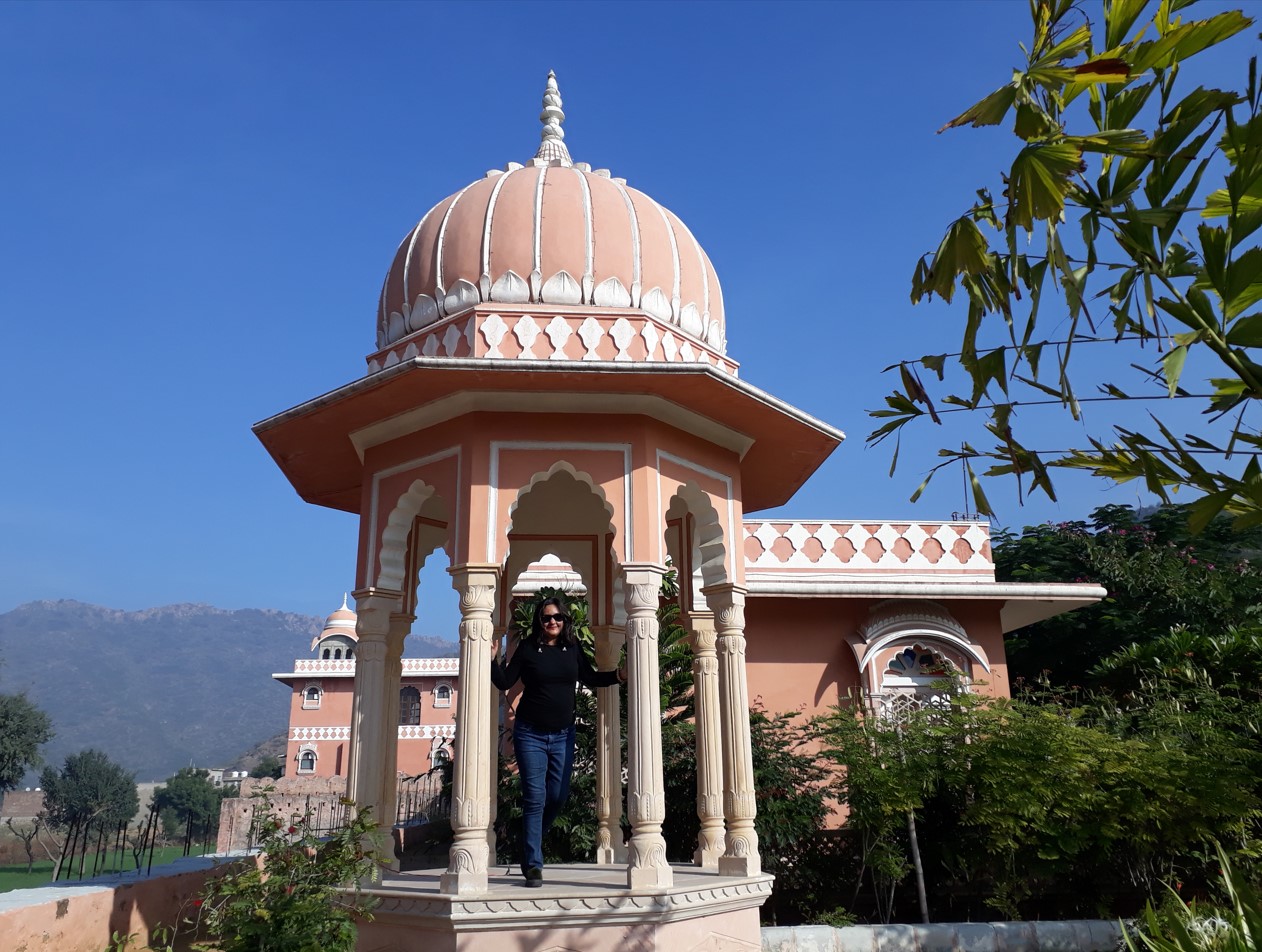By Nivi Shrivastava
One would commonly associate Rajasthan’s architectural heritage with magnificent palaces and traditional temples built by royal families of the region; however, the artistic Havelis built by the merchants in the Shekhawati region are as grand and breathtaking as the popular spots of the state. If you are a history buff looking for a one-of-a-kind experience, consider a weekend in Udaipurawati and explore the grandeur of century-old Marwari Havelis that would easily surpass many manors.

Arty Havelis of Nawalgarh:
While there are many attractions in the quaint, semi-arid region located in the northeast part of Rajasthan, one can begin the history trail with a guided tour from Nawalgarh, a small town in the Jhunjhunu district. This old town is also known as the Golden city of Rajasthan and was once considered the richest part of India. Many affluent business families like the Birlas, Goenka, Khaitan, Nemani, Dharnidharka, Somani, Ganeriwala, Murarka, Poddar and Seksaria flourished in this town before they spread in other parts of India. Imagine living in an art gallery with vivid artwork etched in every inch of your home – well, that’s exactly how these beautiful haveli-style homes were built by the rich traders of the town. Famous for its fresco and artwork on the walls, some of the exceptionally unique heritage homes are now preserved as museums for tourists.
The typical Rajasthani design elements like jharokhas, jhulas, backyard, stepwells, painted stable for animals, grand entry and exit doors, etc. in these Havelis blend beautifully with the European stained glass and fresco stories splashed across the walls. One can also observe the ancient art techniques using natural paints, wood carvings, and structural divisions of these buildings, some of which are now restored by the owners.

According to the history keepers, some of the Havelis have artwork that was commissioned to artists to depict the tales from Ramayana, Mahabharata, European gods and goddess and historically significant incidents like the details of the first train journey from Bombay, famous battles, etc. In these landmark Havelis, you’ll witness the glowing history of the golden era preserved in every nook and corner with antique memorabilia placed in the same way as it used to be in the olden times. Some of the famous Havelis in this town are the Anandi Lal Podar Haveli, Sheesh Mahal, Murarka Haveli, Sanganeria Haveli, Chhawchharia Haveli, Bansidhar Bhagat Haveli, Chokhani Haveli, Seksaria Haveli, Bhagat Haveli, Poddar Haveli, Bedia Haveli, Chudi wali Haveli, and Jummachoudry Haveli.
Idyllic Udaipurwati:

Moving on a few kilometers from the rich past of Nawalgarh, one arrives in the rustic landscapes of Udaipurwati, named after the ‘Udaipur of Shekhawati’ as it used to be the capital of Raja Todarlmal of Shekhawat Rajput clan. Situated in the foothills of Aravalli range, one can walk around sprawling mustard fields and enjoy authentic rural life in the Inderpura village with camels and horses. The picturesque location of Udaipurwati and the cultural heritage around this region is slowly picking up among corporate and business travellers from Delhi NCR, leading to the revival of old trade routes.

On the Delhi road State highway route, stop for traditional delicacies from the region like Ker Sangri (dried berry), pyaaj kachori, bajra ka kichra, kadi chawal, laal maas, and besan ki sabzi. Although, the place is quite popular throughout the year among domestic and international tourists, for photography enthusiasts’ monsoon season is ideal as one can spot a migratory bird perched on a cenotaph or a dancing peacock midst the lush milieu. The best time for a getaway could also be during the big festivals of Rajasthan – Teej (celebrated in July) and Holi (celebrated in March) – to enjoy the local feasts and fetes of the region.
Pickle lanes of Lohargal:
An interesting place to visit around Udaipurwati is the small village of Lohargal named after Loha (Iron)+Gal (to melt), where according to mythological tales the Pandavas took bath after the war of Mahabharta and dissolved their weapons in the holy tank called Bhim Kund. Many pilgrims visit the sun temple and take bath to wash away their sins in the holy water originating from the Aravali hills. One can also visit nearby holy shrines like the Shakambhari Mata temple and the famous Salasar Balaji temple to complete the temple run.
While exploring the village, the most noticeable thing for an outsider would be the astonishing number of pickle shops mushroomed around the temple. The tiny lanes here are full of pickle sellers, who make all kinds of wholesale pickles and preserves using locally grown mangoes, chillies, berries, garlic, ginger and what not. Not buying these yummy pickles for home would be criminal, so make sure you come back with bags full of these local specialties.
(To reach us, write to newspeakwork@gmail.com)
